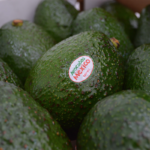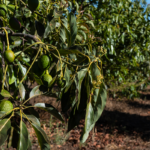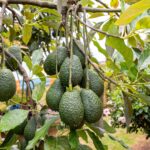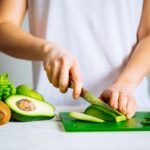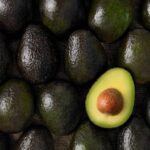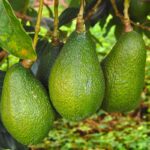How to tell if an avocado is bad

This content of this article published by the University of California, Riverside
How To Tell If An Avocado Is Bad
1. Check The Color
Not oxidation (your light green avocado turning dark green, even brown), but quinones "are responsible for bitter flavor,” says Monte Nesbitt, an Extension Program Specialist at the Texas A&M AgriLife Extension. "There can be some loss of eating quality as the process continues, although perceptions of these bitter flavors vary among people.”
DARK GREEN FLESH DOESN’T ALWAYS MEAN AVOCADO IS ROTTEN
So the impact of oxidation on avocado flavor is a bit up in the air. Eric Focht, a staff research associate at the University of California Riverside, said he wasn't aware of any blind taste tests of browned versus freshly-cut fruit. But, he'd "bet that if the subject couldn't see what they were eating, they'd notice little difference; I know I don't." Most of the aversion, he hypothesizes, is psychological: "We don't like the way it looks, so it's off-putting. A big part of food is its presentation, and we associate browning or discolored fruit with being bad or overripe or even rotten."
DARK GREEN OR GRAY FLESH CAN MEAN CHILLING INJURY
"On the other hand," Focht reminded me, "there are types of browning and discoloration in avocado fruit that DO affect flavor"—like chilling injury, which is browning or blackening of the skin and browning or graying of internal flesh due to low-temperature storage—"and it's important to distinguish between [these] and phenolic response."
So, a few years ago, we did a mini, totally unscientific, mostly anecdotal blind taste test at the Food52 offices. One of our avocados was truly funky—brown-gray from the moment we opened it up—and it tasted discernibly different, though not bad, per se: more like there was something obscuring the true avocado flavor; then-staffer Amanda Sims put it well when she said it tasted like an unripe avocado (slightly blah-ish) but with a soft texture.
The avocado that was pristine when we cut into it but left out to brown for a few hours, on the other hand, was harder to differentiate from the freshly-cut one: Maybe it tasted slightly bitter... maybe. It was hard to say! (Of course, the oxidation that occurs after a few hours is surely less impactful than oxidation that happens over a number of days.)
In all scenarios we realized that avocados—at least the ones we're getting in New York City (that is, shipped in from Mexico and California)—aren't so palatable on their own. But when you add the necessary salt and pepper and lime juice, any deterioration in taste due to oxidizing probably wouldn't be noticeable at all.
2. Taste It (Yes, Really!)
As for safety concerns? Nesbitt said that there's "no safety problem with consuming dark avocados unless they have also been exposed to room temperature and bacteria, thus recommendations to refrigerate them are valid." So if you're tasting something funky or rancid or "off" in your brown avocado (or the sandwich you're saving for the next day), it's important to think about why it's brown: It could be due to something other (or maybe more nefarious) than oxidation.
If presented with an unsightly, but otherwise very fine (largely light-green-fleshed, some dark bruisings OK, buttery but not liquified, absolutely no foul smells); avocado, we’re on Team Just Eat It. And it sounds like you are too: When we asked you your feelings about oxidizing avocados, most of you commented that you simply cut around discolored areas or use the less-than-perfect fruit in smoothies, on toasts, or in guacamole.
But! If you can't get behind browning avocados (and you're upset that the Natavo Zero is meant for commercial use, not home kitchens) and they do taste bitter or funky to you, you can take precautionary measures to stymie their browning (counterintuitively, the best choice may be to do nothing at all!).
Or, you can seek out special varieties less prone to browning (many of which aren't available in all parts of the country). Focht told me that "some avocados suffer from [browning] a lot more than others and Hass is one of the varieties that does have particular problems with browning after the flesh is cut. Many other avocados, however, show a significantly less pronounced response" and "some of them really do not seem to brown at all (Sir Prize, a UCR release [a cross that originated at UC Riverside] from the late 90s comes to mind)."


















